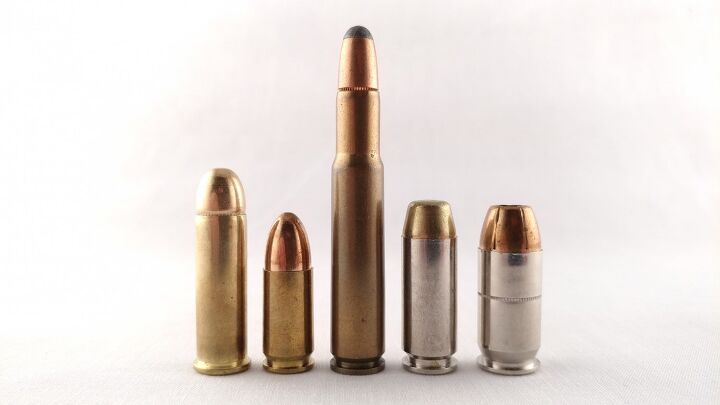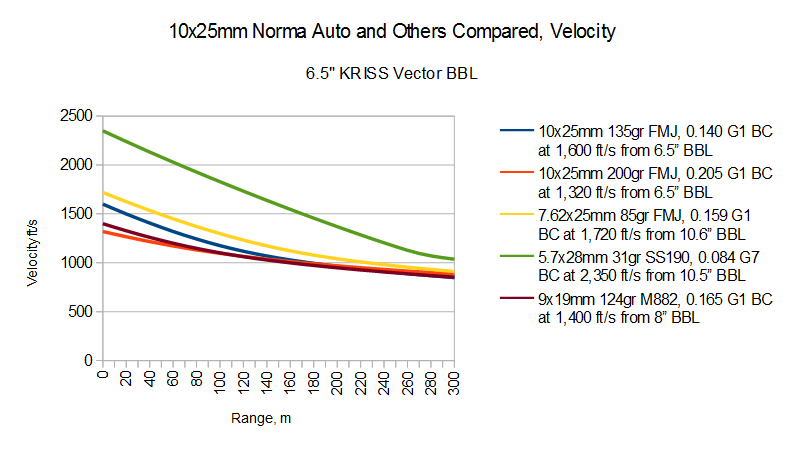Oh yes, it’s that time. The 10mm Automatic, what hasn’t been said about it? Well, a decently sourced article about its history*, maybe, but that’s for another time. Right now, we’re considering the 10mm Auto (or 10mm Norma as it’s more prim and properly called) as a personal defense weapon and submachine gun caliber. The 10mm was designed in 1980 by Swedish company FFV Norma AB with input from Jeff Cooper as the most powerful and capable automatic handgun round of its day, but will that extra power pay off when pushed beyond its design limits into the 50-300m range, at least according to the JBM Ballistics calculator?
Asking this question isn’t so out of left-field. Although the 10mm Auto never had the career in submachine guns that either the .45 ACP or 9mm Parabellum did, it has been suggested for this role a number of times. The FBI, during their very brief adoption of the caliber, commissioned the MP5/10 from Heckler & Koch, who created a model which is to this day one of the rarest production MP5 variants of all time. More recently, KRISS unveiled their 10mm caliber Vector submachine gun, carbine, and pistol, to a decent amount of fanfare. The question of how the 10mm performs in the PDW/SMG role is therefore worthwhile, I think.
Before we hit the charts, I’d like to point out that the numbers I am using for the 10mm are very much on the high end of the spectrum. I did this because I wanted to best represent its full potential as a PDW and SMG caliber, not as a pistol round.
Let’s get into it:
These graphs unfortunately show the 10mm as a little bit of a disappointment in the PDW world. Besides the relatively high energy retention of the 200gr load, there just isn’t much differentiating the 10mm from the 9x19mm or 7.62x25mm. Even the 135gr load – representing the oft-repeated claim that 10mm can give rifle-like performance with lightweight bullets – hardly retains more energy past 150 meters than the 9mm from a submachine gun barrel! In 200gr form, the 10mm does retain substantially more energy and specific energy (energy divided by frontal area, a very rough approximation of raw penetration capability) than do the others thanks to its high muzzle energy, but besides that feels like a fairly normal pistol round. The other thing to note is that even though the 200gr load has the highest retained energy on these charts, it still has less retained energy than the 5.56x30mm MARS covered earlier, and only very slightly more than 5.56x45mm M193 from a 10.5″ barrel. Given the high weight and recoil of this load, this is a little underwhelming.
Weight for the 10mm Auto is intermediate between the 9mm and .45 ACP, at 17 grams per shot for 180gr ammunition. 135gr ammunition, representing the lightest loads in the caliber, can weigh as little as 14 grams, while 200 grain ammunition at the other end of the scale weighs as much as 19.5 grams, very close to .45 ACP.
*If anyone is interested in the true history of the 10mm, check out Dean Speir’s article about its predecessor, the .40 G&A. Sadly, Dean plans to retire his website soon, so enjoy it while you can.
 Your Privacy Choices
Your Privacy Choices



